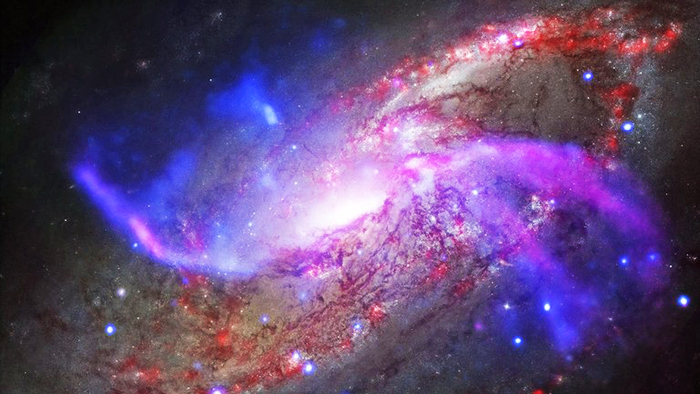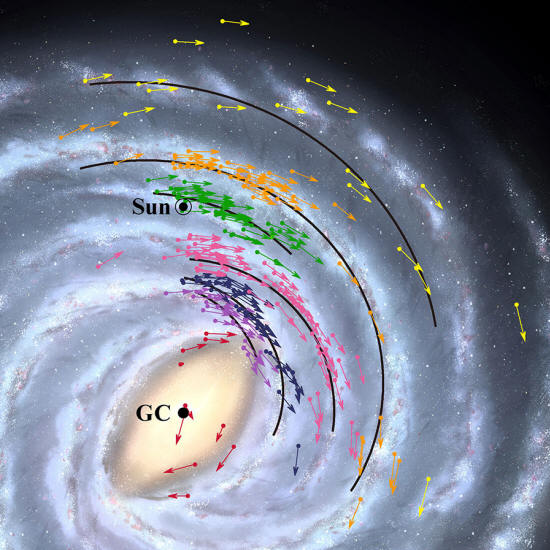|

November 27,
2020
from
RT Website

FILE PHOTO. © Global Look Press
Keystone Press Agency / NASA
As if 2020 wasn't 'unprecedented' enough, astronomers have learned
that Earth is actually 2,000 light years closer to the
Sagittarius A* supermassive black hole
at the center of the Milky Way galaxy than was previously thought.
On top of that, our solar system is also hurtling through space at
seven kilometers per second faster than scientists had calculated.
The stellar revelations are thanks to a new and improved map of the
Milky Way, published this week (Earth
Faster, Closer to Black Hole in New Map of Galaxy and
The First VERA Astrometry Catalog)
and based on observations collected from a Japanese astronomy
project over the last 15 years, coupled with other recent data.
One light year equals 9.5 trillion kilometers, so while it may
initially sound as if the end is nigh, scientists have stressed that
there really is no cause for alarm over Earth's replotted proximity
to Sagittarius A*.
Rather than spelling impending doom, the new modeling allows
scientists to pinpoint the location of Earth within the galaxy to a
greater degree of accuracy.
Our freshly plotted Milky Way is the result of observations from
telescopes across Japan, which form the radio astronomy project
'VERA'.
Established in 2000,
VERA stands for VLBI (Very
Long Baseline Interferometry) Exploration of Radio
Astrometry.

Position and velocity map of the Milky Way Galaxy.
Arrows show position and velocity data for the 224 objects
used to model the Milky Way Galaxy.
The solid black lines show the positions of the Galaxy’s spiral
arms.
The colors indicate groups of objects belonging the same arm.
The background is a simulation image.
(Credit:
NAOJ)
The project uses the 'interferometry'
technique to combine data from multiple telescopes across Japan,
creating a super-sharp resolution of 10 micro-arcseconds, in other
words,
focused enough to
spot a coin on the surface of the moon...
The National
Astronomical Observatory of Japan on Thursday revealed that its
own astronomers, along with other groups, had generated a "position
and velocity map" which they used to calculate the center of the
galaxy.
This galactic center, the astronomers said, is 25,800 light years
from Earth, around 2,000 light years closer than the International
Astronomical Union's official distance of 27,700 light years, which
it settled on in 1985.
And as 2020 continues moving at breakneck speed, the new map also
led astronomers to find that the Earth is actually orbiting the
center of the Milky Way at 227 km/s, rather than the slower official
speed of 220 km/s.
Researchers at VERA are now attempting to create more detailed maps
of the area close to the central supermassive black hole,
using telescope data from Japan, South Korea, and China...
|



